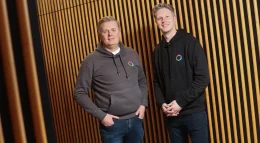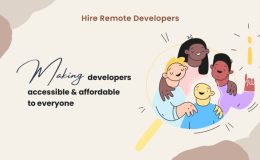Here is a quick overview of what is claimed to be the ‘The Definitive Guide to Developing Portable Tizen Apps’. Link at the bottom directs you to the site with ALL the information.
Table of Contents:
- List of Figures
- Source Code Listings
- Introducing Tizen
- Motivation behind portable development
- The world wide soup
- Tizen Architecture
- Vendors and device segments
- Web Runtime and Web Framework
- WebKit adoption
- GNU/Linux and sources
- JavaScript Libraries
- JQuery Mobile
- Sencha Touch
- Dojo Mobile
- Enyo JS
- HTML5 Boilerplate
- Native-to-JavaScript bridges
- Package standard
- Store deployment
- Tizen Development Tools
- Tizen integrated development environment
- Tizen emulator
- Tizen simulator
- Summary
- Benefits of portability
- Works Cited
List of Figures
- W3C and other standards
- Tizen layered architecture
- Browser and Web Runtime
- JavaScript library screen shots
- Divergence of rich and reach
- Web app installation structure
- Web app file system layout
- Tizen SDK icons
- Eclipse-based IDE
- Ripple-based WRT simulator
- Dynamic performance analyser
- Samsung made Tizen device
Source Code Listings:
- Declarative programming with jQuery Mobile and multi page encapsulation
- A complete Sencha Touch index.html, suitable even for large projects
- Implementation of the entry point to a Sencha Touch app
- A small Dojo Mobile app implemented completely in index.html
- A small Enyo JS app implemented completely in index.html
- (You can download the sample code for this article here: zip, tar)
Abstract:
This article complements the online lecture series delivered at the annual Tizen Developer Conference and elsewhere. Titled “JavaScripting Tizen Web Apps” and “Tizen Application Portability,” these lectures serve to guide developers interested in Tizen and the benefits of portable development strategies.
An analysis of the available Tizen APIs begins with consideration of standards and portable web technologies. The Tizen architecture is reviewed, and contrasting its Web and Native Frameworks leads to an inspection of Tizen’s deployment approach and how it affects web logic and content of both server-based and locally installed apps.
While evaluating strategies to leverage JavaScript libraries, a number of popular candidates are presented. Attention is given to the Web Framework embedded version of jQuery Mobile as well as third party alternatives like Sencha Touch, Dojo Mobile, and Enyo JS. Along with a short explanation of native-to-javascript bridges and their potential in portibly employing the Tizen Device API, code samples illustrate the utility of popular JavaScript libraries.
Introducing Tizen:
As far as mobile-optimized operating systems are concerned, Tizen [Tsg01] is certainly a new player. This unique platform enjoying a partnership between Samsung, Intel, and the Linux Foundation intends to soon power a wealth of devices. According to Samsung, “We plan to release new, competitive Tizen devices within this year and will keep expanding the lineup depending on market conditions.” [Busweek01] As the Tizen OS and APIs mature one thing is clear. Tizen architects are putting the concept of portable applications built on standard technologies first and foremost.
In this article we’ll cover the basics of how Tizen APIs support development of portable apps. Regardless of whether the developer uses the official Tizen software development kit (SDK) or other development tools, apps written for Tizen’s Web Framework [Saxena01][Tsg02] can be ported to other platforms leveraging web standards relatively easily. Being an emerging technology Tizen stands to benefit even more from the porting of pre-existing web apps [Wang01].
For the Full Information head on over to Web Builder Zone

















